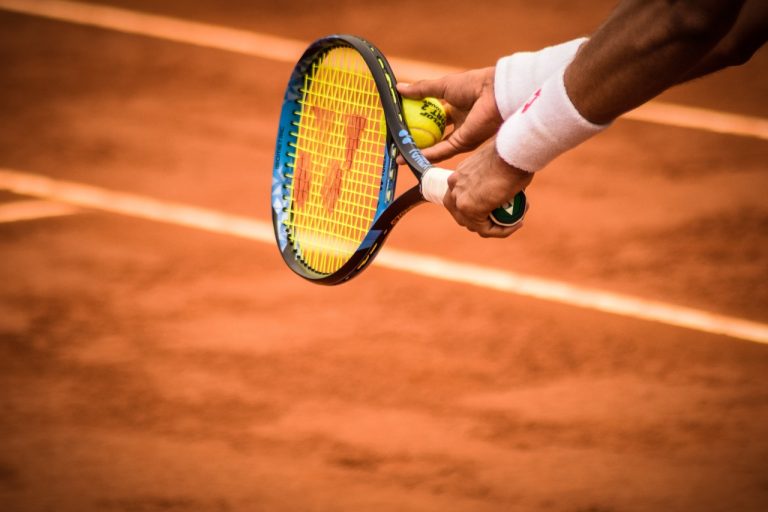Why Tennis Aces the Competition as the Best Sport

Did you know tennis is one of the few sports where the player’s mental resilience can outweigh physical prowess? As a sport that combines strategy, agility, and precision, tennis not only captivates millions around the globe but also fosters a unique blend of competition and camaraderie.
Why tennis is the best sport, from its rich history to its unparalleled ability to engage fans and players. You’ll understand how tennis shapes champions and builds lifelong connections. Have you ever wondered what makes tennis universally loved and respected among athletes?
With its fast-paced action and intricate strategies, tennis isn’t just a game, it’s a way of life for many.
Why tennis is considered the best sport, highlighting its health benefits, social aspects, and cultural significance. Prepare to discover how this incredible sport offers more than just a match but an opportunity for personal growth and community.
Imagine a sport where every point matters and every player has the chance to shine, welcome to the world of tennis! Renowned for its elegance and intensity, tennis symbolizes determination and excellence in sports culture. In this article, we will uncover the reasons why tennis reigns supreme
History and Global Reach of Tennis
Summary of Tennis’s Beginnings and Development
Tennis, as we know it today, traces its origins back to the late 12th century in France, where a game called “jeu de paume” was played. Initially, players used their hands to strike a ball against a wall, but over time, they began to use gloves and then racquets.
By the late 16th century, the game evolved further, especially in England, where it became known as “real tennis” or “court tennis.” This early version of the sport was played indoors and had complex rules.
The modern game of lawn tennis began to take shape in the late 19th century. In 1873, Major Walter Clopton Wingfield patented a game called “Sphairistikè,” which introduced the concept of playing on grass courts and using a net.
This innovation led to the formation of clubs and the first official tournament, the Wimbledon Championship, held in 1877. Over the following decades, the sport continued to grow in popularity, leading to the establishment of national and international governing bodies.
The introduction of the Davis Cup in 1900 and the Federation Cup (now the Billie Jean King Cup) in 1963 further propelled the sport’s development on a global scale. The Open Era, which began in 1968, allowed professional players to compete in Grand Slam tournaments alongside amateurs, significantly raising the sport’s level of competition and visibility
Examine Its Worldwide Popularity and Key Competitions
Tennis has become one of the most popular sports worldwide, with millions of fans and players across continents. Its appeal lies in its accessibility; people of all ages and skill levels can enjoy the game recreationally or competitively. The sport is governed by the International Tennis Federation (ITF), which oversees competitions and rankings globally.
Among the most prestigious events in tennis are the four Grand Slam tournaments:
1. Wimbledon: Established in 1877, Wimbledon is the oldest tennis tournament in the world and is considered the most prestigious. Played on grass courts, it is known for its strict dress code and traditions, including strawberries and cream as a customary refreshment.
2. US Open: Founded in 1881, the US Open is held annually in New York City and is known for its vibrant atmosphere and night matches. In 1970 it was the first Grand Slam tournament to introduce a tiebreaker system.
3. French Open (Roland Garros): Established in 1891, this clay-court tournament takes place in Paris and is renowned for its challenging surface that requires unique playing techniques. It is the only Grand Slam event played on clay.
4. Australian Open: This tournament has been held annually in Melbourne since 1905 and is known for its extreme summer heat and innovative facilities. It was the first Grand Slam to introduce a retractable roof on its main court.
These major tournaments, tennis features numerous competitions such as the ATP and WTA Tours, which host events throughout the year and culminate in year-end championships. The sport’s global reach is further enhanced by its inclusion in the Olympic Games and various regional championships.
Tennis continues to evolve with technological advancements, training methods, and global outreach initiatives to promote youth participation. Its enduring popularity is evident in its diverse fan base, iconic players like Serena Williams, Roger Federer, Rafael Nadal, and Novak Djokovic, and its status as a key part of global sporting culture.

Physical Benefits of Playing Tennis
Tennis is a dynamic sport that offers many physical benefits, making it an excellent choice for individuals of all ages. Here’s a closer look at how playing tennis can improve overall fitness, agility, and endurance:
Overall Fitness: Tennis is a full-body workout that engages multiple muscle groups, helping to enhance strength, flexibility, and coordination. The constant movement in the game, running, serving, and volleying, improves cardiovascular health. Regular participation enhances heart function, lowers blood pressure, and increases lung capacity.
Agility: Tennis is fast-paced and requires quick footwork and rapid directional changes. Players must be agile to respond to their opponent’s shots, which trains the body to move swiftly and efficiently. This agility translates to better performance on the court, enhanced everyday movements, and reduced risk of falls in older adults.
Endurance: Tennis matches can last hours, requiring players to maintain their energy levels throughout. Engaging in this sport builds stamina and endurance over time. Players develop the ability to sustain physical activity for longer periods, which is beneficial for overall health and fitness goals.
Benefits for All Age Groups:
Children: For young players, tennis promotes physical development, enhances motor skills, and encourages social interaction through teamwork and competition. It helps build discipline and focus while instilling a love for physical activity early on.
Adults: Tennis is a fun way for adults to stay fit and provides an outlet for stress relief. The competitive aspect keeps players motivated and encourages regular practice and physical activity.
Seniors: Tennis can be adapted to accommodate different skill levels and physical capabilities for older adults. It offers low-impact exercise that helps maintain mobility, balance, and coordination. Additionally, the social aspect of playing doubles or participating in clubs fosters community engagement and mental well-being.
Cultural Impact and Iconic Players
Tennis has been significantly shaped by its legends, with players like Serena Williams and Roger Federer standing out as transformative sports figures. Their influence extends beyond the courts, impacting culture, fashion, and social issues, while inspiring millions of fans around the globe.
Serena Williams, often regarded as one of the greatest athletes of all time, has dominated the sport with her powerful play and has been a formidable advocate for gender equality and racial justice. Her journey from Compton to becoming a 23-time Grand Slam champion has inspired countless young athletes, particularly girls and those from underrepresented backgrounds.
Williams has utilized her platform to address issues such as pay equity in sports and has been vocal about the challenges faced by women and minorities. Her bold personality and determination have made her a role model, encouraging fans to pursue their dreams regardless of societal barriers.
Roger Federer represents grace, sportsmanship, and excellence in tennis. With his elegant playing style and remarkable achievements 20 Grand Slam titles and an enduring rivalry with players like Rafael Nadal and Novak Djokovic, Federer has captivated audiences worldwide.
His philanthropic efforts through the Roger Federer Foundation, which focuses on education and sports for children in Africa and Switzerland, further exemplify his commitment to giving back. Federer’s calm demeanor and humility have earned him respect not just as an athlete but as an ambassador for the sport.
His influence extends into popular culture, where he is often seen collaborating with luxury brands and participating in global events that promote tennis.
Both Williams and Federer have contributed to increasing the visibility of tennis, making it more accessible to diverse audiences. They have transcended the sport, becoming cultural icons who represent resilience, innovation, and excellence. Their legacies inspire future generations of athletes to break boundaries and redefine what is possible in tennis and beyond.
Social Aspects of Tennis
Opportunities for socializing and building connections
Tennis clubs, tournaments, and community events provide an excellent platform for individuals to meet new people, foster friendships, and engage in a shared passion for the sport.
These settings often encourage interaction among players of various skill levels, creating an inclusive environment where everyone can feel welcome.
Tennis Clubs
Membership in a tennis club often comes with a sense of belonging. Many clubs organize regular social events, such as mixers or themed tournaments, which allow members to connect outside of competitive play.
Additionally, clubs may offer group lessons or clinics, providing opportunities for players to learn together and develop camaraderie.
Tournaments
Participating in local or regional tournaments can also enhance social connections. Players often bond over the shared experience of competition, supporting one another during matches and celebrating victories together.
After tournament play, players frequently gather for awards ceremonies or social functions, further strengthening these newfound relationships.
Community Events
Many communities host tennis events that are open to the public, such as charity matches or fun days that include games and activities for all ages. These events not only promote the sport but also encourage participation from non-players, creating a vibrant atmosphere where families and friends can come together.
Such gatherings can lead to lasting friendships and a greater sense of community.
In summary, tennis serves as more than just a sport; it is a vehicle for social engagement and community building. Through clubs, tournaments, and various events, individuals can forge meaningful relationships that extend beyond the court, enriching their lives both socially and personally.
“Narrative,” “strategy,” “emotion,” and “focus” are relevant to both tennis and writing



